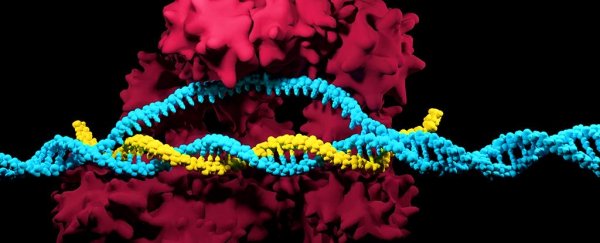CRISPR has been heralded as one of the most important breakthroughs in modern science, but there could be a hidden and potentially dangerous side effect to the wonders of its genetic editing technology, a new study reveals.
A systematic investigation of CRISPR/Cas9 genome editing in mouse and human cells has discovered that the technique appears to frequently cause extensive mutations and genetic damage that the researchers say wouldn't be detected by existing DNA tests.
"This is the first systematic assessment of unexpected events resulting from CRISPR/Cas9 editing in therapeutically relevant cells," explains geneticist Allan Bradley from the Wellcome Sanger Institute in the UK.
"We found that changes in the DNA have been seriously underestimated before now."
It's not the first time scientists have raised alarm about the potential pitfalls of CRISPR.
In May last year, a team from Columbia University made headlines when they announced the genetic editing toolkit could introduce hundreds of off-target mutations to the genome.
Those claims were later retracted when the scientists involved in the original study were unable to replicate their own results, but since then other research has also suggested CRISPR could cause dangerous side effects.
To investigate these kinds of possibilities further, Bradley and fellow researchers examined the effects of the technique on mouse stem cells and human retinal epithelial cells.
"My initial experiment used CRISPR/Cas9 as a tool to study gene activity, however it became clear that something unexpected was happening," says the first author of the new study, PhD student Michael Kosicki.
"Once we realised the extent of the genetic rearrangements we studied it systematically, looking at different genes and different therapeutically relevant cell lines, and showed that the CRISPR/Cas9 effects held true."
Those effects included large deletions or mutations that happened even several thousand DNA bases (aka kilobases) away from the target site where CRISPR/Cas9 was used to make the edit.
Not only could such significant mutations of the DNA code have potentially harmful effects – by disrupting healthy gene and cellular functioning – but the researchers warn that standard DNA genotyping assays may not ordinarily pick up on these mistakes.
In the worst-case scenario, if such mangled edits were introduced into humans in a CRISPR/Cas9 treatment, important genes might end up being switched on or off, which could make for potentially serious health consequences.
"In the clinical context of editing many billions of cells, the multitude of different mutations generated makes it likely that one or more edited cells in each protocol would be endowed with an important pathogenic lesion," the authors write.
"Such lesions may constitute a first carcinogenic 'hit' in stem cells and progenitors, which have a long replicative lifespan and may become neoplastic [promoting abnormal growths] with time."
If such unforeseen side effects can indeed be introduced by using CRISPR/Cas9 to snip at the genome, the researchers say it's imperative for future clinical applications to address the risks.
And it's likely a lot more research will be needed to find out whether it's possible to prevent such editing errors from arising.
"It is important that anyone thinking of using this technology for gene therapy proceeds with caution," Bradley says, "and looks very carefully to check for possible harmful effects."
The findings are reported in Nature Biotechnology.
